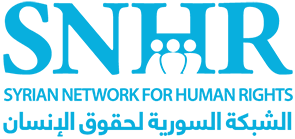The 194 Women and 99 Children Killed Constituted a Third of All the Victims, Showing the Syrian Regime’s Deliberate Intention to Kill the Largest Number of Innocent People

Languages
Available In
Press release: (Download the full report below)
Paris – The Syrian Network for Human Rights (SNHR) issued a report today on the ninth anniversary of the largest chemical weapons attack by the Syrian regime against Syrian citizens in the two Ghoutas of Damascus on August 21, 2013, in which SNHR reveals that this attack resulted in the deaths by suffocation of 1,144 individuals, including 194 women and 99 children, who constituted a third of all the victims, showing the Syrian regime’s deliberate intention to kill the largest number of innocent people.
The 12-page report notes that recent months have seen shameful efforts by Algeria, acting under Russian orders, aimed at returning the Syrian regime to the Arab League, despite the Syrian regime being responsible for carrying out 217 chemical attacks against the Syrian people. The report adds that the barbaric attacks on the two Ghoutas of Damascus remain the cruelest and most difficult of all these attacks, stressing that the Syrian regime’s apparent total impunity, in particular for its use of internationally prohibited chemical weapons, is one of the most prominent factors in leading many in Syrian society and among the peoples of the region to despair and to lose hope of ever attaining freedom or justice, and thus encouraging some to resort to joining extremist organizations and entering into a hopeless, endless cycle of violence and conflicts.
The report outlines the details of the two Ghoutas attacks and stresses that they showed the deliberate intention of the Syrian regime to kill the largest possible number of Syrians, including women and children, since the attacks, using large amounts of Sarin gas, took place in the early hours of the morning after midnight while people were asleep, thus minimizing their chances of survival, with the report noting that the relatively low temperature estimated in the area that night and the lack of any breeze there during the period between 02:00 a.m. and 05:00 a.m. indicates that those launching the missiles knew that the heavy poison gases would settle and remain close to the ground rather than being dispersed or blown away by any wind.
As the report reveals, 1,144 individuals were killed by suffocation that day, including 1,119 civilians, amongst them 99 children and 194 women (adult female), and 25 Armed Opposition fighters, while 5,935 other people were injured, suffering respiratory and suffocation symptoms.
In addition, the report reveals that this death toll constitutes approximately 76% of the total victims killed as a result of the chemical attacks launched by the Syrian regime since December 2012 up until the most recent attack using chemical weapons which SNHR documented in al Kbaina in Latakia suburbs in May 2019.
The report documents a total of 222 chemical attacks on Syria since the first attack using chemical weapons documented by SNHR on December 23, 2012, until August 20, 2022, with approximately 98% of these carried out at the hands of Syrian regime forces, and nearly 2% at the hands of ISIS, with the report also distributing the attacks by year as well as across the governorates. The analysis of the data showed that Damascus Suburbs saw the largest number of CW attacks of all the Syrian governorates experiencing 71 attacks, followed by Idlib governorate with 45.
As the report further reveals, the Syrian regime’s 217 chemical weapons attacks caused the deaths of 1,510 individuals, comprising 1,409 civilians, including 205 children and 260 women (adult female), 94 Armed Opposition fighters, and seven Syrian regime prisoners of war who were being held in the Armed Opposition prisons.
These chemical attacks also injured 11,080 individuals, including five Syrian regime prisoners of war who were being held in Armed Opposition prisons.
ISIS, meanwhile, carried out five chemical attacks since its establishment on April 9, 2013, up until August 20, 2020, all of which were in Aleppo governorate, and resulted in the injury of 132 individuals.
The report provides details of the distribution of the record of chemical attacks according to Security Council resolutions, with the attacks carried out by the Syrian regime divided into 33 attacks prior to Security Council Resolution 2118 and 184 attacks after it, while 115 more attacks were carried out after Security Council Resolution 2209, and 59 additional attacks after the formation of the United Nations Mechanism and the Security Council Resolution 2235. As for the five attacks carried out by ISIS, they constitute, according to the report, a breach to Security Council Resolutions 2118, 2209, and 2235.
The report ascribes the primary responsibility for moving and using chemical weapons to the head of the Syrian regime, Bashar al Assad, who is at the same time the Commander-in-Chief of the Army and the Armed Forces. The report stresses that it is impossible even to carry out tasks far smaller than this without his knowledge and approval, noting that International Humanitarian Law takes into account the hierarchical nature of the armed forces and the discipline imposed by leaders and holds commanders criminally responsible on the personal level, not only for the actions and breaches they have personally committed but also for the actions committed by their subordinates. The report adds that the relationship of the head of the regime and its leaders and the strict and centralized chain of command mean that the head of the Syrian regime Bashar al Assad and the higher-ranking leadership officials are all directly involved through their responsibility for the use of chemical weapons of mass destruction in committing violations that amount to crimes against humanity and war crimes against the Syrian people. With regard to the use of chemical weapons, the report reveals that the Commander-in-Chief of the Army and the Armed Forces, his deputy, the Director of the Air Force, the Air Intelligence Department, the commanders of military airbases and the squadron directors and brigades of the Republican Guard, in addition to the directors of scientific research units bear the greatest responsibility for the use of this weapon. The report notes that the SNHR’s database includes data on at least 387 prominent army and security officers, civil and military personnel in research and scientific studies centers which specialize in providing and supplying chemicals used militarily in Syria, who are accused of ordering or carrying out chemical weapons attacks in Syria, with the report identifying a few of the most prominent senior leadership officials amongst those involved particularly in the chemical attack on the two Ghoutas on August 21, 2013.
The report calls on the United Nations and the UN Security Council to impose economic, political, and military sanctions on the Syrian regime on the anniversary of its use of chemical weapons in the Eastern and Western Ghoutas of Damascus, as a form of moral compensation for the victims’ families, as well as to prosecute the individuals identified in this report, verify the extent of their involvement in the use of chemical weapons, and place them on the lists of sanctions and terrorism.
The report recommends that the Syrian case should be referred to the International Criminal Court and all those who are responsible for crimes should be held accountable, further asserting that Russia must stop using its veto, as it is a party to the Syrian conflict, and the UNSC states’ veto power should be withheld in cases where crimes against humanity and war crimes are committed, as well as making other additional recommendations.


